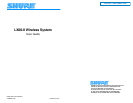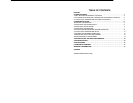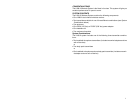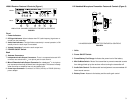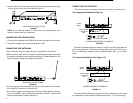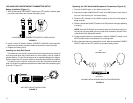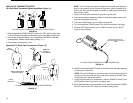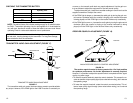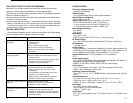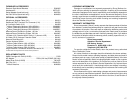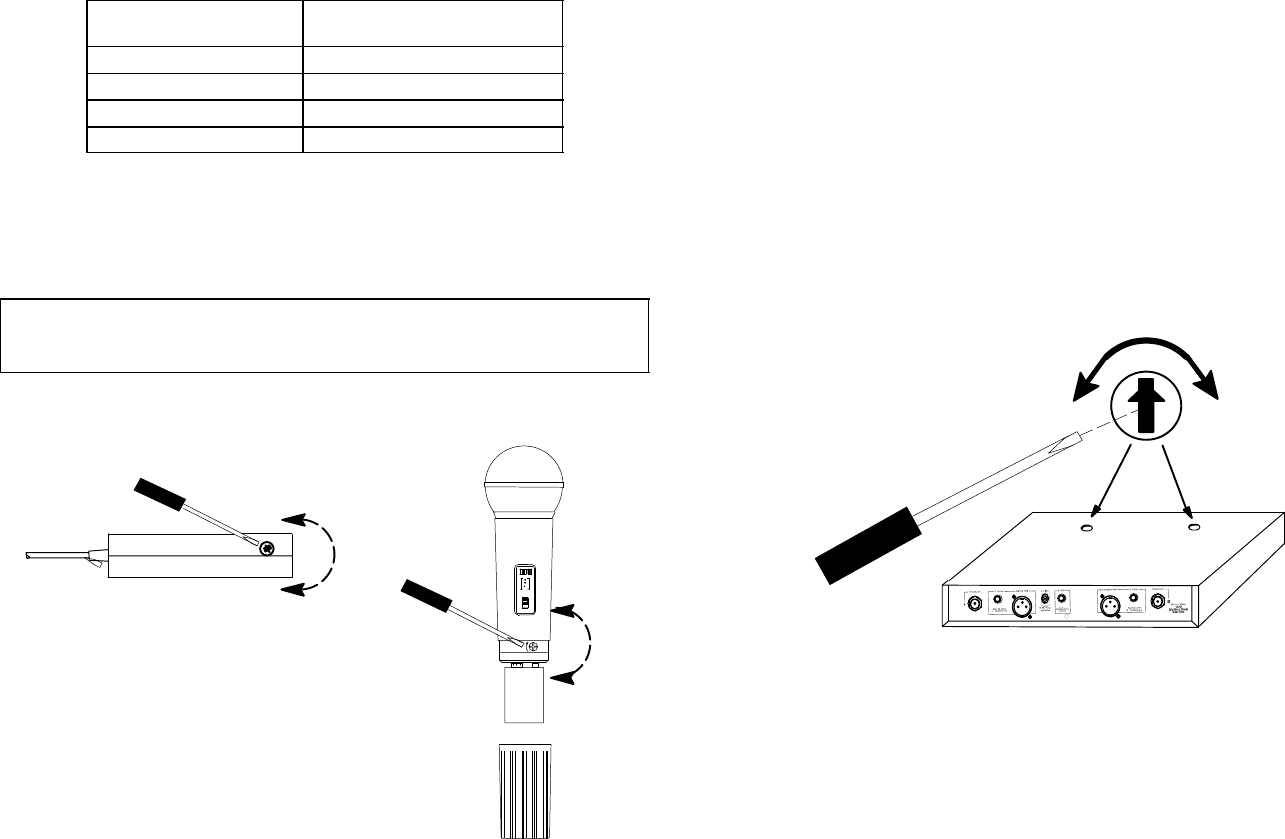
CHECKING THE TRANSMITTER BATTERY
Battery Life Indicators Remaining Transmitter
Operating Time*
Green 6 to 20 hours
Green and Amber 4 to 6 hours
Amber 2 to 4 hours
Red 1 hour or less
* Estimated operating time assumes the use of a fresh 9 V alkaline battery (Duracell MN1604).
NOTE: The above battery life indicator readings apply for 9V alkaline batter-
ies ONLY. Transmitter operating time for rechargeable 8.4V nicad batteries
vary with type, brand and number of times the battery has been used. Actual
operating times for rechareable batteries are not predictable.
WARNING: Batteries inside transmitters in long-term storage may corrode
and leak acid, causing damage to the transmitter. For long-term storage,
remove batteries from the transmitter.
TRANSMITTER AUDIO GAIN ADJUSTMENT (FIGURE 17)
FIGURE 17
LX1
INCREASE GAIN
DECREASE
GAIN
LX2
INCREASE
GAIN
DECREASE GAIN
TRANSMITTER AUDIO GAIN ADJUSTMENT
The transmitter audio gain control has been factory preset to provide satisfac-
tory output. However, if the PEAK light on the LX88-II receiver is constantly on
or never on, the transmit audio level may require adjustment. Use the gain con-
trols as follows to adjust the equipment for the best sound quality.
To adjust the audio gain, locate the transmitter audio gain control and use the
supplied screwdriver to adjust the control.
•If the PEAK light is always on, decrease the audio gain by turning the gain con-
trol counter–clockwise (while the vocalist is singing or the musical instrument
is being played) until the PEAK light on the receiver flickers only occasionally.
•If the PEAK light is never on, increase the audio gain by turning the gain control
clockwise (while the vocalist is singing or the musical instrument is being
played) until the PEAK light on the receiver flickers only occasionally.
RECEIVER SQUELCH ADJUSTMENT (FIGURE 18)
LX88-II RECEIVER SQUELCH CONTROL ADJUSTMENT
FIGURE 18
DECREASE
INCREASE
SQUELCH
The receiver squelch control is factory preset at the 12 o’clock position
for optimum performance. No further adjustment is normally required.
However, it is possible to adjust the squelch control to emphasize either
signal
quality
or
system range
.
• To raise the squelch threshold, rotate the control clockwise. This causes the re-
ceiver to demand a higher quality signal (less noise before muting), but it
reduces
the operating range.
• To lower the squelch threshold, rotate the control counterclockwise. This al-
lows a lower quality signal through (more noise before muting), but it
extends
the operating range.
12
13



